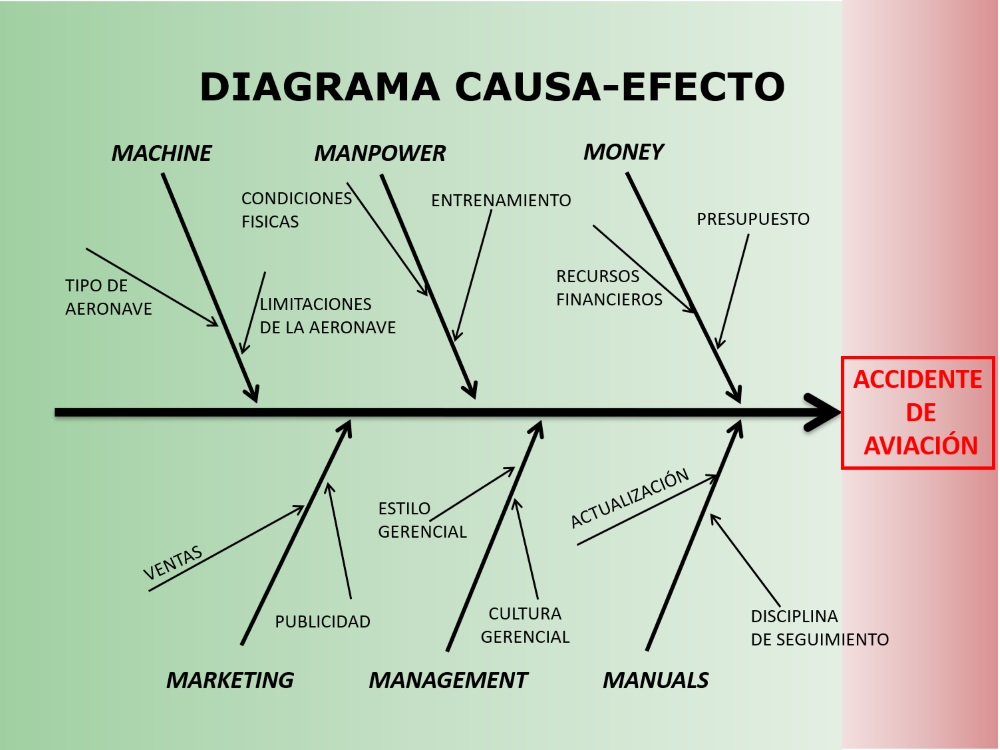The Cause-Effect diagram is the representation of several elements (causes) of a system such as the SMS that can contribute to a problem also called effect and for our case an aviation incidents or accidents, it is shown in the red part on the left of our diagram.
This diagram was developed in 1943 by Professor Kaoru Ishikawa in Tokyo. Also known as “Ishikawa Diagram” or “Fishbone Diagram” for its similarity to the skeleton of a fish.
For SMS risk management, it is an effective and relatively simple tool to analyze processes and conditions, and to develop a data collection plan, very useful to find the root cause of an already experienced incident or also to analyze the potential causes of what could happen.
This methodology allows the “SMS Control Board” to organize large amounts of information about the problem and determine exactly the possible causes.

The Cause-Effect diagram “Fish-Bone”
The most recommended methodology is the use of the 6 M’s by their names in English: Machine, Manpower, Money, Manuals, Management and Marketing.
Machine – refers to the aircraft, the ground equipment, the maintenance tool, etc.
Manpower – refers to everything related to human-machine interaction, training, skills, experience, physical condition, attitudes, etc.
Money – refers to the lack of financial resources, supplies, warehouses, spare parts, consumer materials, training, ground school, etc.
Manuals – refers to the use of the manuals to carry out any aviation practice, to its understanding, to its reading, to its availability, obsolescence, updating, etc.
Management – refers to the type of management, the leadership, the characteristics of the administration of human resources, penalties, punishments, threats, or vice versa if there are no policies on human performance, etc.
Marketing – refers to the pressure that there may be to dispatch a flight, departures, arrivals, go arround, delays, charges for delays, etc.
The efficient use of a Cause-Effect Diagram makes it possible to integrate all these ideas for study from different points of view, very practical to find the root cause, it is closely related to the 5 w’s for its acronym in English: why, how, when, who and where.







